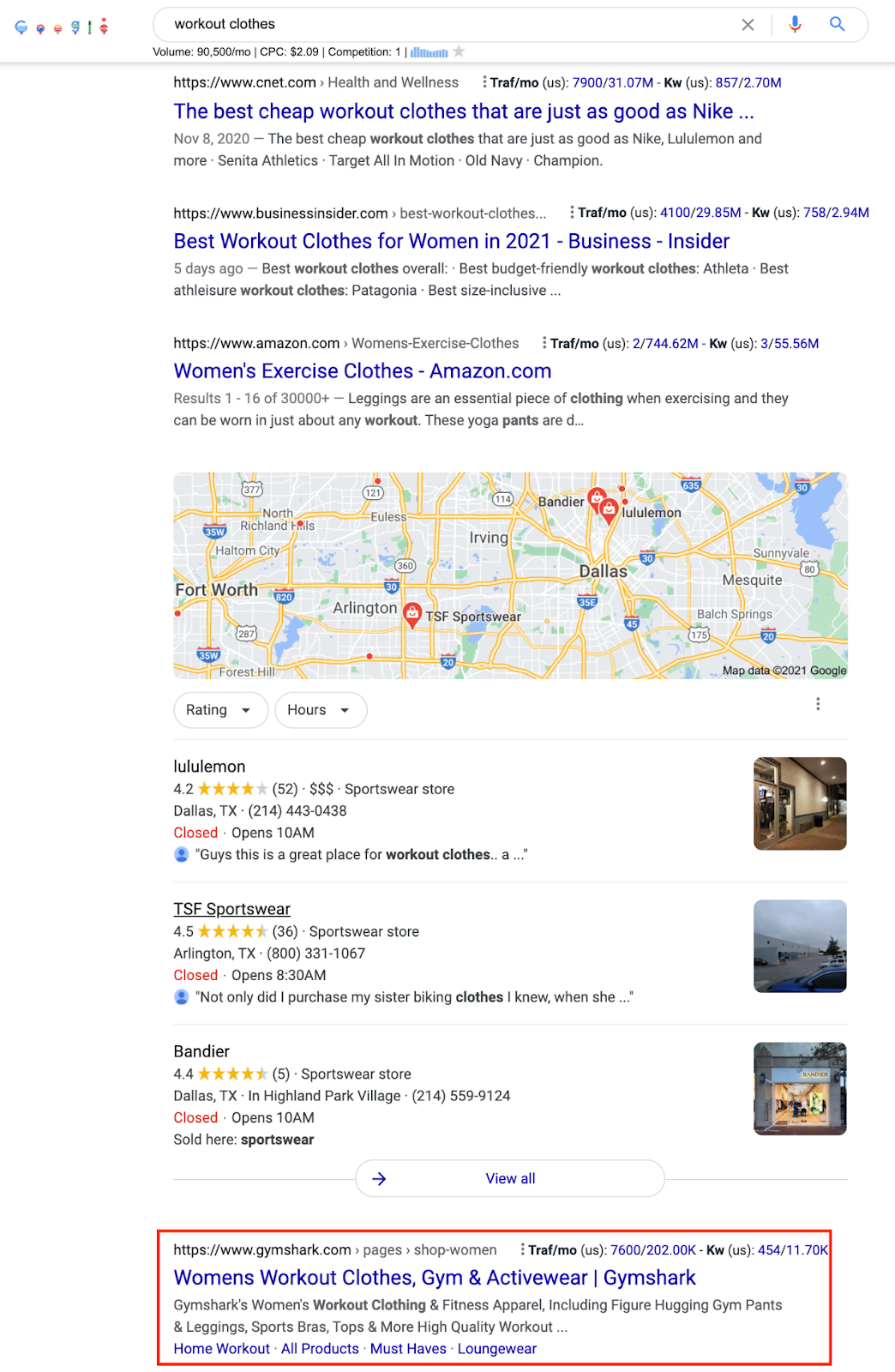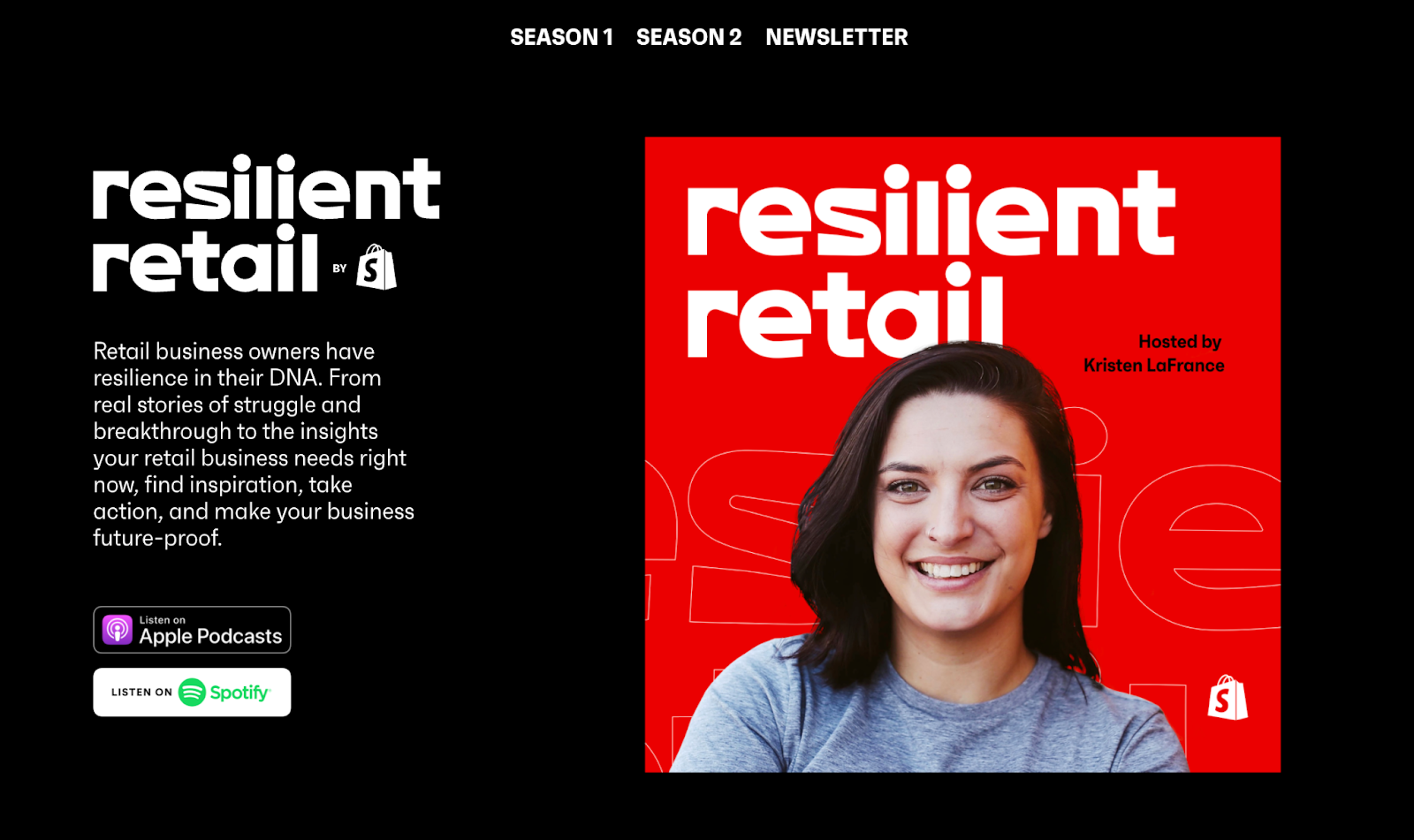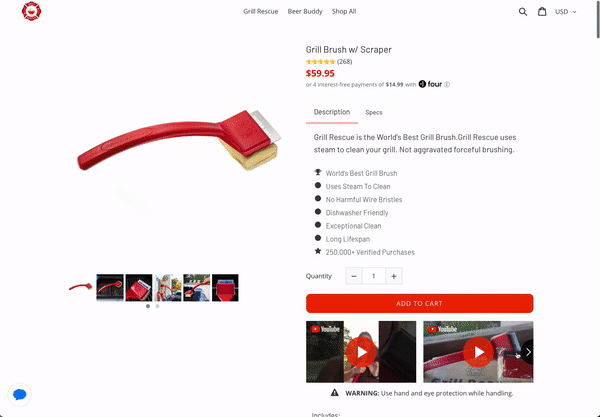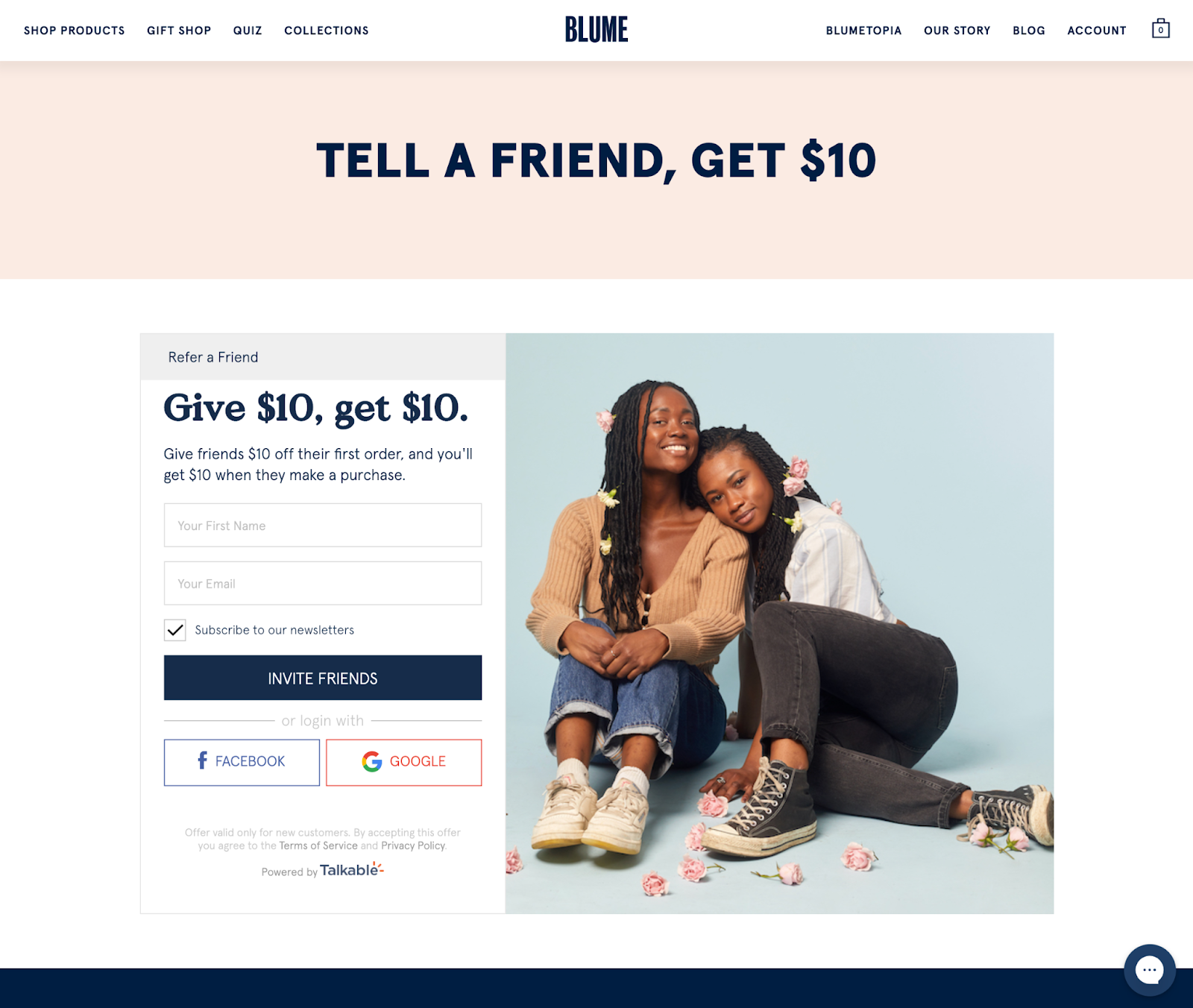Driving Growth: 11 Best Marketing Strategies Any Small Business Can Execute
 Marketing a small business isn’t easy. It’s actually hard.
Marketing a small business isn’t easy. It’s actually hard.
Which is why most people struggle to reach the right audience, no matter what strategies they use.
If this sounds like you, you’re in the right place.
But this article doesn’t focus on every marketing strategy under the sun. What it focuses on instead are proven strategies that work. Strategies that drive traffic to your store and increase revenue for your small business.
The best part? You can carry out many of these strategies today and start seeing results, fast. This article will walk you through the top, most successful marketing strategies and examples to date, with tips on how to apply them.
Find your next marketing strategy 📈
Free Webinar:
Marketing 101
Struggling to grow sales? Learn how to go from first day to first sale in this free training course.
11 best digital marketing strategies
Explore the top types of marketing strategies listed below:
- SMS marketing
- SEO
- Email marketing
- Influencer marketing
- Affiliate marketing
- Google Ads
- Podcasts
- Social media marketing
- Content marketing
- Video marketing
- Referral programs
SMS marketing
SMS marketing is one of the fastest ways to reach customers and drive sales. 90% of texts are opened and read (compared to 20%–30% off emails). It takes five minutes to set up a campaign. And at roughly .01 cents per message sent, it’s an affordable way to connect with your customer base.
Similar to email marketing, SMS is an owned marketing channel where you can send one-to-many messages to your customers. They can be one-off campaigns, like a flash sale, or a part of an automated drip campaign, like a welcome series or multi-day challenge.

A thoughtful, well-designed SMS marketing plan will build brand awareness, drive sales, and turn your customers into your biggest fans. Start by signing up for an SMS service provider or browse the growing list of SMS apps in the Shopify App store. You can add opt-in forms to your website, landing pages, and social media profiles today to start building your subscriber list.
Resources:
SEO
The majority of your store’s online traffic will come from search engines like Google. According to Wolfgang Digital, online businesses should expect 35% of total traffic and 33% of revenue to come from search engine results pages. Although this marketing strategy takes time, it’ll become cheaper to acquire customers through search versus paid advertising, which levels out the costs.
Ranking high in search engines can get you more daily traffic. Take Gymshark, for example. The retailer ranks fourth for the keyword “workout clothes,” which gets nearly 90,500 searches per month. The average click-through rate for URLs in position four is about 4.87%.
If we do the math, Gymshark should be getting around 4,400 visitors per month from this one keyword, which is a lot of potential customers.

While optimizing your store for search may seem like a daunting task, it’s a lot easier than you think. That’s why we’ve created a few guides below that go further into search engine optimization and will help you increase visibility and grow online sales.
Resources:
- SEO Is About Humans First, Search Engines Second (SEO Marketing Guide)
- 7 Free and Simple SEO Tools for Bootstrapped Business Owners
- Need Traffic? Here’s How to Get Visitors to a New Website (Even If You Don’t Know Where to Begin)
Email marketing
Email marketing refers to sending marketing messages to potential and current customers to sell, educate, and build affinity. Email is an owned marketing channel, which means you control the content and distribution.
It’s become one of the most cost-effective and conversion-rich ways to market an ecommerce store today, with an average return of $42 for every dollar spent.
The best part? You can create automated email marketing campaigns to connect with customers and keep them coming back, such as:
- Transactional emails, sent during checkout or other purchasing actions. These are mostly functional, but are important for sending key shipping and order information to customers.

- Promotional emails, designed to build awareness and promote new products or deals. For example, you could build a Black Friday Cyber Monday email sequence to send limited-time discounts during the shopping holiday.

- Lifecycle emails, or “triggered” emails, send based on the actions a shopper takes and where they are in their customer lifecycle. For example, a cart abandonment email you send only after a customer leaves a product behind.

Building an email list and sending compelling messages helps keep in touch with customers and retain them. If your business hasn’t started email marketing yet, you’re leaving money on the table. Fortunately it’s easy to get set up with a free email service, start building your email list, and drive revenue for your business.
Resources:
- Learn Email Marketing: Everything from List Building to Advanced Lifecycle Automation
- How to Build an Email List that Builds Your Ecommerce Business
- Shopify Email: Let Your Brand Identity Shine with Email Marketing
Influencer marketing
Influencer marketing is one of the best ways to market your brand and build awareness online. It involves partnering with creators who align with your brand messaging, and promoting products through their channels. According to Influencer Marketing Hub, nine out of 10 marketers believe influencer marketing to be effective.
With reason: influencers generate higher user engagement than branded content. The average engagement rate with influencers is around 5.7%, roughly 2X higher than content brands publish themselves on Instagram. Moreover, businesses that use influencer marketing earn $18 for every dollar spent.
According to MediaKix’s recent Influencer Marketing Survey, the top five influencer marketing channels are:
- YouTube
- Blogs
Businesses like yours have endless opportunities in influencer marketing. Finding an influencer may seem time consuming, but there are many influencer marketing platforms to help find creators, start your campaign, and keep track of metrics easily. To learn more about this marketing strategy, we recommend reading this beginner’s guide to influencer marketing on Instagram.
Affiliate marketing
Affiliate marketing is an advertising strategy in which a business pays another business or person—aka an affiliate—to generate leads and sales. Affiliates are often paid commission fees to encourage them to find ways to promote the company and its products. It’s a fast way to reach target customers and make sales, with nearly 15% of all digital media industry revenue coming from affiliate marketing.
Similar to influencer marketing, affiliates will refer to your products by sharing it on their blogs, social media platforms, website, etc. The affiliate earns money each time someone makes a purchase or signs up for something through their unique link. Both parties benefit when done well: your business makes more revenue, and the affiliate earns a nice income from their marketing efforts.
With 81% of brands running affiliate marketing programs, it’s clear you’ll want to give this marketing strategy a shot. Use the following guides to learn more about affiliate marketing for your business.
Resources:
- The Beginner’s Guide to Setting Up an Affiliate Program for Your Shopify Store
- Affiliate Marketing: How to Turn Product Recommendations into Passive Income
Google Ads
Google Ads is the most misunderstood channel for marketing an online business. Many stick to social media ads on Facebook or Instagram for ease of use but miss out on finding customers on the two largest search engines in the world: Google and YouTube.
You can set flexible budgets as low as $5. Pay only when someone clicks on your ad. Target specific audiences based on behaviors and past actions. But what makes Google Ads attractive is the ad types you can use to reach customers.
For example, say you’re selling vegan protein powder. More than 110,000 people search for the term each month. It’s a specific term likely to convert because it’s closely related to your product.
You could run text ads, which show up as a blue link and green URL. They’re identified from organic results by an Ad tag. Or you can run Google Shopping Ads, which show as a product carousel with different products, their prices, and average reviews. The carousel has a subtle Ads tag in the upper left corner.

Setting up Google Ads is a bit tricky. But if you’re willing to learn how to advertise with it, you can reach a massive target market with high buying intent, run retargeting campaigns, and drive more sales and traffic, faster.
Resources:
Podcasts
People are listening to more podcasts every week. A survey by Edison Research revealed that the number of people in the US listening to podcasts increased 175% over the last five years, with nearly 90 million people listening to a podcast each month.
There two ways to market a new business with podcasts:
- Start your own podcast
- Become a guest on someone else’s podcast
Running a podcast could be a great way to reach your audience and expand your business. You don’t need to be a technical person to create one, nor does it take a heavy upfront investment. But it can take a while to build traction.
Podcast hosts, like our very own Kristen LaFrance, of Resilient Retail, are always looking for intriguing people to interview.

If you have an interesting story, industry experience, or valuable information to share, you’ve got a chance at becoming a guest on any podcast.
Resources:
Social media marketing
Social media marketing is one of the best marketing strategies for small businesses. It involves using social networks to promote and sell your products, services, and brand. Brands can use both unpaid (organic) and paid social media marketing tactics to increase online sales and generate awareness.
Social media sites include the common ones that most people know, like Facebook and Twitter, but there are also lesser-known social media sites that brands can tap into. Determining the right social media channel for your brand depends on what you’re selling, your customer demographics, and your overall marketing goals.
Popular social media platforms:
- TikTok
- Snapchat
Effective social media marketing should involve curating content, scheduling product-related posts, and automating what you can. But bringing out the best in social media marketing is about more than broadcasting your brand—it’s about understanding, engaging, and reacting to your audience and the world they live in.
Because when so many brands use social media as a soapbox to pitch their products, it pays to be one of the ones building a real connection with their audience and adding a bit of joy to their day-to-day lives.
Resources:
- How to Create a Social Media Marketing Strategy: A Beginner’s Guide
- Instagram Marketing 101: Using Hashtags, Stories, and More to Grow Your Business
- User-Generated Content: How to Rally Customers to Create Content With You
Content marketing
Business owners understand the importance of creating a strong online presence. They create brilliant online stores, invest in ads, and develop email sequences to attract customers. But look at their content strategy and you’ll notice most have nothing.
This is a missed opportunity for online businesses, especially in niche markets where content is poorly done and under-optimized.
Brands that stand out today are those that are becoming creators and producers and finding new ways to approach content and engage with their audience.
Content types a brand can create include:
- Blogging
- Webinars
- Newsletters
- Videos
- Audio
- Infographics
- TikTok videos
- White papers
- Contests and giveaways
- Forums
- Guest podcasting
- Live streams
The list goes on. The types of content you create will depend on who your audience is and where they hang out. Considering inbound content generates over three times as many leads as outbound marketing tactics—and costs 62% less—it’s clearly a profitable marketing strategy to use in your business today.
Resources:
- 8 Brilliant Blogs Run by Ecommerce Stores (And What You Can Learn From Them)
- 7 Free Content Creation Tools to Help You Earn More Engagement Online
- 4 Ecommerce Blog Post Templates to Build Traffic for Your Store
Video marketing
It’s no secret that people enjoy video content, whether it’s a movie, a TikTok, YouTube video, etc. According to recent research from Wyzowl, 92% of businesses regard video content as important to their overall marketing strategy.
To make sure you’re engaging with your target audience, video marketing should have a place in your digital marketing strategy. But to jump on the latest trends, you’ll want to know what types of video content marketers are creating.
The top video trends include:
- Explainer videos (which 72% of marketers create)
- Presentation videos (48%)
- Sales videos (42%)
- Video ads (42%)
Trends like short-form videos (think TikTok) and live streaming are also here to stay. Ecommerce brands can monetize them by selling products directly through the video.
Another way brands can use video is by surfacing user-generated product reviews. Apps like Reeview automatically search, verify, and show your product video review from YouTube to shoppers on your site.
"On average, 15% of shoppers watch videos on product pages for an average of 2.5 minutes per shopper," explains Nichole Elizabeth DeMeré, CMO of Reeview.
"Our customers are getting +100x ROI because we track orders placed immediately after videos are watched. In terms of time spent on site, Reeview adds hundreds of extra hours of time spent on the product pages."

For example, Headphone Zone recently added 91 hours, 11 minutes of extra time on-site in just the last seven days. That’s almost four extra days of cumulative time that shoppers spent more on their product pages after video reviews were added."
Reeview makes it easy to track ROI and conversion so you can see how video reviews impact your sales. Done well, it can help you get ahead of competitors and excel at one of the most effective marketing strategies to date.
Download it for free on the Shopify App Store and launch in minutes.
Resources:
- How to Make Your Own Online Videos (In 30 Minutes or Less)
- Like, Comment, and Thrive: How to Start a Successful YouTube Channel for Your Business
- Bring Product Pages to Life with Built-In Support for 3D Models and Video
- How to Make the Most of Instagram Video with Posts, Stories, and IGTV
Referral programs
Word-of-mouth marketing is nothing new. It’s a promotional strategy that encourages current customers to refer new ones to your business, driving more than $6 trillion of annual consumer spending. Referrals can happen naturally, but businesses use a dedicated referral system to increase awareness and sales predictably.
Referral programs work because consumers turn to their peers for trusted information about brands and services. Research has shown that friends and family recommendations have more influence than celebrity endorsements, nailing down the idea that word of mouth still matters in today’s age, with brands striving to become “talkworthy.”
Referral programs don’t need to be complicated either. Take Blume, a bodycare brand. It uses a simple “Give $10, get $10” model to get new customers.
All someone has to do is recommend Blume to a friend, and when that friend makes a purchase, both parties get $10 off. It’s straightforward and effective.

If you want to create a referral program, there are many referral apps in the Shopify App Store to help launch one. You just have to download the app, pick your incentives, create the campaign, and promote your new program.
Resources:
Improving your online marketing techniques
Marketing your business isn’t brain surgery. The strategies shared above work for all small and local businesses. It just takes a little know-how and execution to see results.
Some strategies may work better than others—that’s OK. It’s up to you to test each one and see what works best for you. Then you can invest more in the right strategies and market your business with less effort.
Know any other small business marketing strategies we missed? Drop a note in the comments.
Illustration by Eugenia Mello
Ready to create your business? Start your free trial of Shopify—no credit card required.
Marketing strategies FAQ
What are the 4 Ps of marketing strategy?
Why is a marketing strategy important?
What are the 3 Cs of marketing?
What are the latest marketing strategies?
- SMS marketing
- SEO
- Email marketing
- Influencer marketing
- Affiliate marketing
- Google ads (PPC and retargeting)
- Podcasts
- Social media marketing
- Content marketing
- Video marketing
- Referral programs
